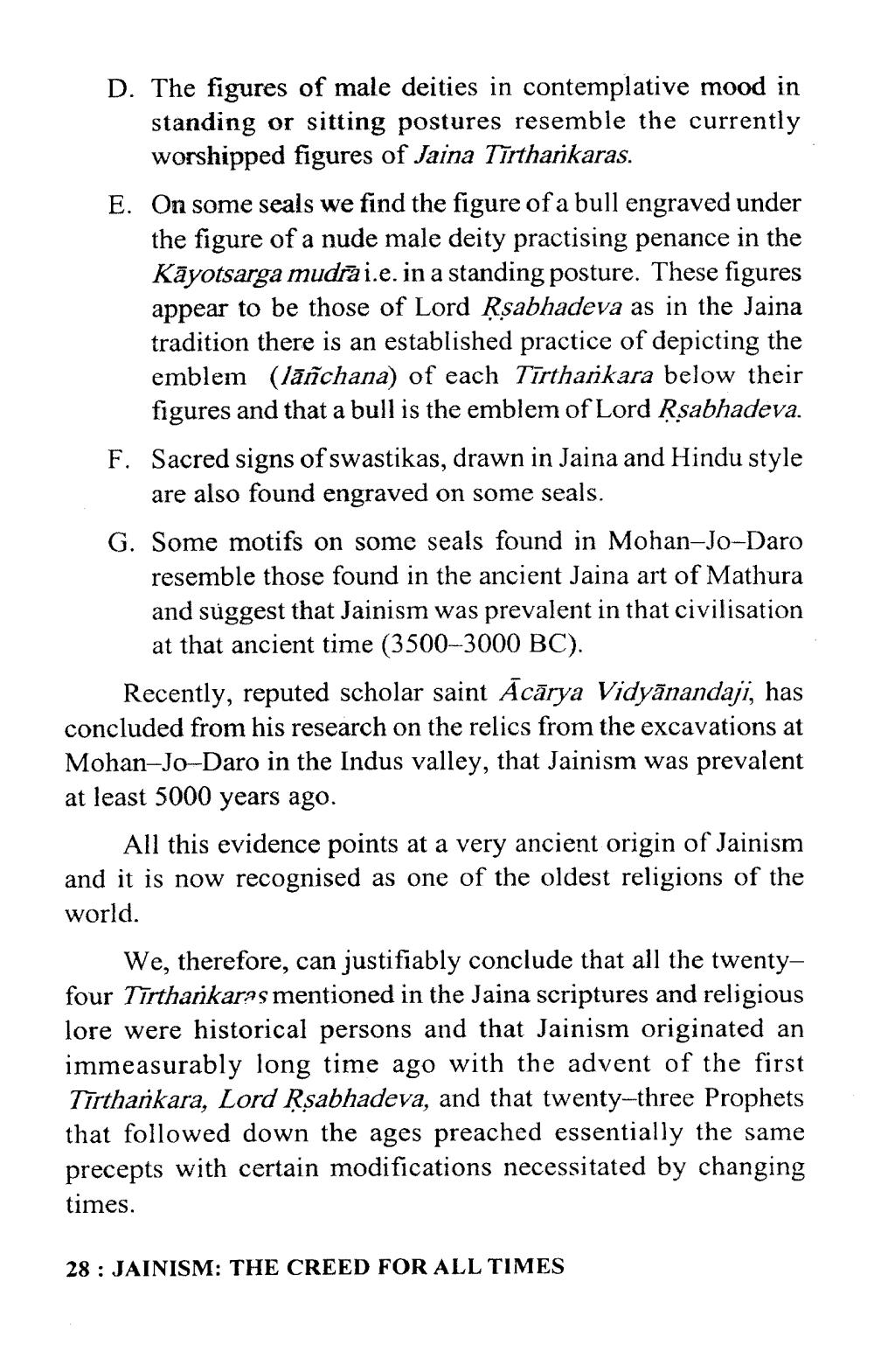________________
D. The figures of male deities in contemplative mood in standing or sitting postures resemble the currently worshipped figures of Jaina Tīrthankaras.
E. On some seals we find the figure of a bull engraved under the figure of a nude male deity practising penance in the Kayotsarga mudra i.e. in a standing posture. These figures appear to be those of Lord Ṛsabhadeva as in the Jaina tradition there is an established practice of depicting the emblem (lañchana) of each Tīrthankara below their figures and that a bull is the emblem of Lord Ṛṣabhadeva. F. Sacred signs of swastikas, drawn in Jaina and Hindu style are also found engraved on some seals.
G. Some motifs on some seals found in Mohan-Jo-Daro resemble those found in the ancient Jaina art of Mathura and suggest that Jainism was prevalent in that civilisation at that ancient time (3500-3000 BC).
Recently, reputed scholar saint Ācārya Vidyānandaji, has concluded from his research on the relics from the excavations at Mohan-Jo-Daro in the Indus valley, that Jainism was prevalent at least 5000 years ago.
All this evidence points at a very ancient origin of Jainism and it is now recognised as one of the oldest religions of the world.
We, therefore, can justifiably conclude that all the twentyfour Tirthankaras mentioned in the Jaina scriptures and religious lore were historical persons and that Jainism originated an immeasurably long time ago with the advent of the first Tīrthankara, Lord Ṛsabhadeva, and that twenty-three Prophets that followed down the ages preached essentially the same precepts with certain modifications necessitated by changing
times.
28: JAINISM: THE CREED FOR ALL TIMES




